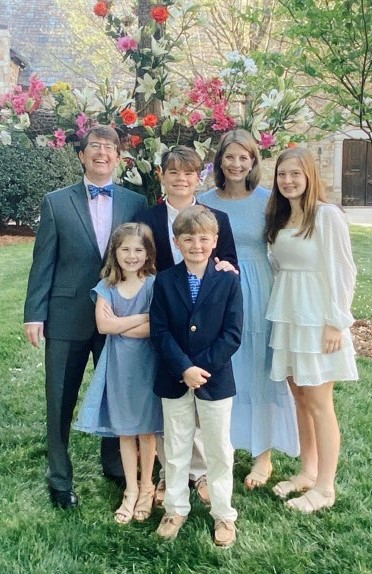This is a case study of a felony DUI and drug possession case we handled which ended with no prison sentence despite some tough facts.
Bob and Rob represented Jane (not her real name) on two counts of felony DUI with great bodily injury and one count of Lortab possession stemming from a wreck near downtown Spartanburg. She faced 30½ years in prison, including 15 years for each felony DUI.
The case presented four major challenges:
- We had no defenses.
- The victims—who suffered broken bones—were public defenders: public service lawyers who defend impoverished people against criminal charges. We knew any sentencing judge would be keenly interested in how they wanted Jane punished.
- Jane overdosed after her arrest.
- The Solicitor made no sentencing recommendation to encourage the judge not to send Jane to prison.
We overcame these challenges in two primary ways. First, we did what we do in a guilty plea: we offered explanations for her conduct, but not excuses. Second, we showed that Jane did the most important thing any client can do—she worked hard to help herself, even though she didn’t do it perfectly.
Below is how we presented this plea, and its result.
The Crash & The Drugs
On July 6, 2012, around 1:39 p.m., Jane tried to make a U-turn on North Church Street near downtown Spartanburg. She turned left at about 20 miles per hour in front of the victims. They had no chance to stop.
Jane’s blood test revealed two powerful drugs in her system: her prescription methadone, plus unprescribed Xanax. Police found an unprescribed Lortab pill in her pocket.
In court, we gently and briefly pointed out the nature of the crime did not show Jane intended to ignore anyone’s safety. The crash was not at high speed and did not involve extreme conduct, such as driving on the wrong side of the road.
How we presented Jane and her struggle with addiction
We often make the point at guilty pleas that judges don’t sentence crimes, they sentence individuals. A crime is often a single incident in a life that's hopefully been well-lived. We try to provide the judge a snapshot of our client’s background to show she is more than her crime, and possibly explain what led her to commit it.
For Jane, we did both.
We showed she battled emotional problems and addiction her entire adult life. Depression and anxiety hound Jane. Her uncontrollable anxiety creates an overwhelming need to control every aspect of her life. She takes Prozac for depression and anxiety, and Ambien to help her sleep.
At age 23, she got addicted to Lortab from a misdiagnosed brain aneurysm that gave her agonizing headaches. By age 27, her Lortab habit was 60 pills a day, plus Xanax when she got stressed.
Jane attempted suicide twice, desperate to escape addiction. But she never quit trying. To beat her Lortab addiction, she started treatment at a methadone clinic. She used methadone for 16 years, until these charges caused her to change her life. There’s more on that in a bit.
Despite her struggles, we showed Jane lives a life of compassion and devotion to others. After a prior husband was paralyzed in a fall, she served as his full-time caretaker for five years, until he passed away.
We also showed the events leading to these charges originated from that devotion.
The Cause of the Crash
We showed the crash resulted not from a pill-popping spree, but from Jane’s reaching her breaking point under enormous strain that led to an unwise choice. At the time, Jane worked as the daytime caregiver for her mother-in-law, who lived with Jane and her ex-husband. Jane’s mother-in-law was in dire health. She passed away about two months after the crash. Jane helped her get up in the morning, get hooked up to a remote vital signs monitor, gave out her morning medications (about 10), fixed her meals, and helped her walk around the house. Jane also took her to see her husband’s sister, who was dying of cancer at a nearby hospice house. The mother-in-law often took out her frustration on Jane with angry, hurtful verbal attacks.
That morning Jane’s stress boiled up when her sister called around 4:30 a.m., claiming she got attacked with a two-by-four. Jane got up, got dressed, took her methadone, and rushed to her sister. Jane calmed her down, got her dressed, and admitted her to the hospital. Then Jane returned home to help her mother-in-law. A few hours later, she drove back to the hospital to retrieve her sister.
At some point, overwhelmed by all the stress of the day, Jane made a poor choice: she took an unprescribed Xanax. The crash happened not long after Jane picked up her sister from the hospital. By then, she felt “emotionally shot.”
Jane’s hopes for a good outcome in her case could’ve been limited by the inability to admit she had a problem. But she understood the vital point of our working relationship—it was a joint effort.
Jane Helps Us Help Her, But Falls Along the Way
Good lawyers can achieve outstanding results for clients in tough cases, but they usually can’t do it alone. Jane earned a key reason to keep herself out of prison: she completed inpatient drug rehab. There, she realized she was addicted to methadone. She decided to stop taking it.
In court, we presented the hidden danger of methadone for Jane—while taking it as prescribed, she only traded one addiction for another. We presented evidence it substitutes for narcotics by producing similar effects and reducing cravings, can be addictive, and can cause withdrawal symptoms when users stop. Jane reported her withdrawals as increased anxiety, nausea, and joint pain.
After rehab, Jane also completed a six-week intensive outpatient program at a local behavioral health center.
But like many who fight addiction, Jane got knocked back. A few months after rehab, Jane overdosed on household medications. We dealt with this in court by explaining this was no binge: hounded by her overwhelming fears of prison, she’d tried to kill herself. In court, Rob noted fear is a powerful motivator, and Jane’s fear indicated strongly she’d never drive under the influence again.
And we could prove Jane never gave up. She was attending Narcotics Anonymous meetings, where she found a devoted sponsor who wrote a compelling letter about Jane’s recovery efforts, which we gave to the judge to consider. The letter stated NA did not count the overdose as a relapse because it was a suicide attempt. Jane had done much to address her addiction, but we still had another very important piece of the puzzle to address.
Victim Outreach & the Victims’ Grace
We also represent felony DUI victims, which taught us one of the best things a felony DUI defense lawyer can do—especially in a case with no defenses—is help the victims. We reached out to them and their lawyers. We made sure the victims got access to Jane’s auto insurance to help them get compensated for their injuries.
In an unusual move we don’t make in every case, we also offered to let Jane meet with the victims so they could tell her what she put them through and she could tell them how sorry she was in person, in private, without them having to wonder if she was just putting on a show for the judge. One victim agreed, and it went well.
In court, both victims blessed Jane with immense grace: neither asked for prison time.
The Sentence
Rob told the judge the guilty plea was the most fearsome day in Jane's life, but she had steeled her nerves to accept responsibility, admit her guilt, and beg for mercy.
Our hard work and the victims’ grace paid off: the judge sentenced her to 30 days house arrest and two years of probation, plus a $5,000 fine. Her driver’s license was suspended for at least three years.
We continue to wish the very best for Jane and for the accident victims.


